Facilities
The Experimental Therapeutics & Pathophysiology Branch (ETPB)
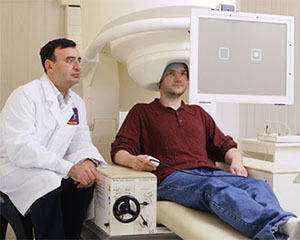
research procedure.
The overarching goals of ETPB are: (1) to provide administrative support for our Section on the Neurobiology and Treatment of Mood Disorders (SNMD); (2) to maintain a common screening program for the Division of Intramural Research Program (IRP) studies on mood and anxiety disorders; and (3) to support clinical and research training.
The Screening Program provides oversight, training, and quality control of the administration of a range of structured diagnostic and dimensional measures of psychopathology. The clinical measures collected include comprehensive diagnostic interviews including history of suicide attempts and ideation, stress/trauma, sleep problems, temperament, psychosis, medical conditions, as well as dimensional measures of the core features of mood and related disorders including positive and negative affect, arousal/regulatory systems and cognitive function. Aside from extensive clinical measures, the major data components central to the program include: (1) Clinical Trials database (CTDB), which stores clinical research data; (2) BioBNK that contains a diverse set of biologic measures; and (3) MAP-R (Mood and Anxiety Disorders Program Repository protocol) of neuroimaging data.
Section on the Neurobiology and Treatment of Mood Disorders (SNMD)
The Section on the Neurobiology and Treatment of Mood Disorders (SNMD) was established in 2010 and focuses on developing innovative pharmacological and neuromodulatory therapeutics for adult patients with treatment-resistant depression (TRD), major depressive disorder and bipolar disorder) and suicidal ideation. Our proof-of-concept (POC) studies are conducted primarily in drug-free depressed and/or suicidal subjects on the research unit of the intramural program (IRP), NIMH. The studies integrate a wide range of clinical, behavioral, and imaging technologies including magnetoencephalography (MEG), structural and functional magnetic resonance imaging (MRI), polysomnography (PSG), plasma biomarkers, cognitive tasks, and noninvasive measures of neuroplasticity, in collaboration with the Noninvasive Neuromodulation Unit (NNU). Our research approach seeks to identify the clinical and biological signatures and mechanism of promising therapeutics with antidepressant and anti-suicidal ideation properties. The long-term vision of the SNMD is to develop the next generation of treatments that act more rapidly and effectively than existing treatments, particularly for severe TRD and suicide.
SNMD is housed in the Mood Disorders Research Unit, 7SE north of the NIH Clinical Center, a state-of-the art facility which currently has 12 inpatient beds designated for patients with mood disorders of which Dr. Zarate is the Unit Chief. Clinical staffing includes a 24-hour, 365 day on-call psychiatrist, and experienced nurse clinicians. Our ability to study patients for long periods of time, over nights and weekends in both the drug free as well as post-treatment states provides a unique opportunity for comprehensive evaluation that would not be possible in the extramural world.
Noninvasive Neuromodulation Unit (NNU)
In the winter of 2015, the newly formed Non-invasive Neuromodulation Unit (NNU) opened at the NIH. Non-invasive neuromodulation refers to the delivery of magnetic, electric or other forms of energy to probe or modulate neuronal circuits. Within the ETPB, the NNU focuses on developing novel noninvasive neuromodulation tools, coupled with brain measurements via neurophysiology and neuroimaging, to measure and modulate neural plasticity for the study and treatment of brain-based disorders. NNU develops novel stimulation paradigms and biomarker batteries to investigate brain-behavior relationships and to inform novel intervention development. The mission of NNU is to develop novel technology and stimulation paradigms for neuromodulation, as well as to advance understanding of mechanisms of neuromodulation therapies, including the spatial, temporal, and contextual aspects of brain stimulation. The NNU aims to optimize these technologies by advancing scientific understanding of the factors that define the dosage of the stimulation in the domains of space, time and context.
- The spatial domain includes coil design allowing deeper or more focal brain stimulation and refined targeting through computational electromagnetic field modeling, and functional and structural imaging with neuronavigation.
- The temporal domain includes the interactions of the brain’s endogenous rhythms with the patterned delivery of stimuli. This includes optimization of stimulus pulse waveform, train and burst frequency, and duration.
- The state or contextual domain includes the experiences and environment prior to and during stimulation, which can be controlled through engagement in a cognitive task and can be tracked with physiological measures.
A Tour of the Inpatient Unit on 7SE at the NIH Clinical Center
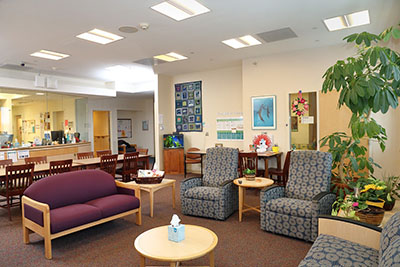
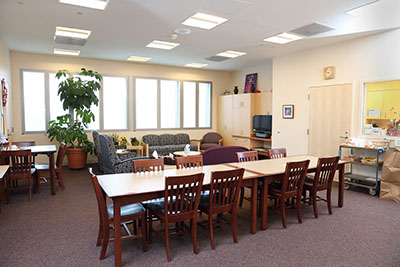
at the NIH Clinical Center.
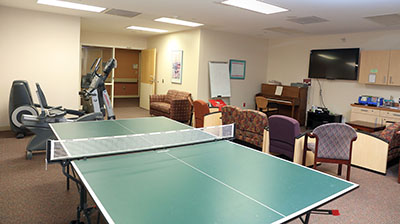
at the NIH Clinical Center.
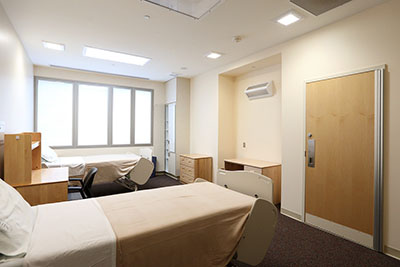
Clinical Center.
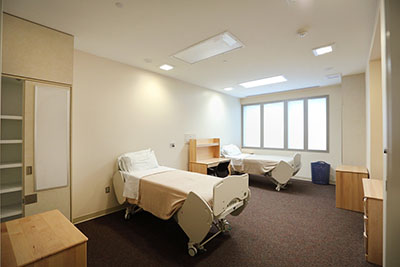
Clinical Center.

